Having a safe and reliable water supply is essential for survival, especially in emergency situations.
Knowing how to store water for long-term use can help you ensure that your family has access to clean drinking water for days, weeks, or even months.
But one question often arises when it comes to storing water—how long can you store it before it becomes unsafe to drink?
How Much Emergency Water To Store
The rule of thumb is that you should store at least one gallon of water per person per day for three days.
So if there are three people in your household, you should aim to store nine gallons of water. If possible, you should try to have a two-week supply on hand—this will provide enough drinking and sanitation water for a longer-term emergency situation.
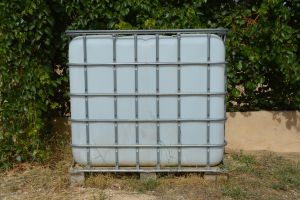 It’s also important to consider that certain members of your household—pregnant women, those who are ill or disabled, and those living in hot climates—may require more than one gallon per day.
It’s also important to consider that certain members of your household—pregnant women, those who are ill or disabled, and those living in hot climates—may require more than one gallon per day.
Therefore, it may be wise to plan for an additional supply above the minimum recommendation.
When storing bottled water purchased from the store, be sure to observe the expiration date listed on each container.
Related: 10 Off-Grid Water Systems You Should Have On Your Property
Non-store-bought options, such as water collected from rain or snow runoff, should be replaced every six months due to potential contamination from outside sources such as wildlife or air pollution.
How Long Can Water Be Stored In Plastic Jugs?
Water from your tap that is clean enough to drink can last up to six months or sometimes even longer when stored in a sealed container.
However, it’s important to check on your stored water every month to ensure it’s still safe.
How Long Can You Store Water In A 55 Gallon Drum?
A food-grade 55-gallon drum can safely store water for up to 1 year or even longer under the right circumstances.
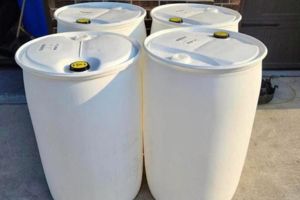
When storing water in a 55-gallon drum, there are certain requirements that must be followed in order to ensure the safety and longevity of your stored water.
First and foremost, it’s important to choose a clean food-grade drum that has never been used with any other substances.
Once you’ve found your clean drum, make sure it is tightly sealed so as not to let in any light or chemicals from the environment.
Another thing to keep in mind when storing water in a 55-gallon drum is treatment options. Regularly treating your stored water with the correct amount of household chlorine bleach can help preserve its quality and taste over time and extend its shelf life significantly.
How Long Can You Store Canned Water?
Generally speaking, depending on the quality of the packaging and the storage conditions, you can safely and reliably drink canned water for up to two years.
After this point, it may start to degrade in terms of smell and taste.
With proper storage techniques, such as providing cool temperatures and avoiding any exposure to direct sunlight, you can maximize the lifespan of your canned water and ensure it remains safe to consume.
Can Water Get Too Old to Drink?
Water is a precious resource and an essential part of life. But can water get too old to drink? The answer is yes, although it’s not the water itself that goes bad, but rather the way it’s stored or contaminated.
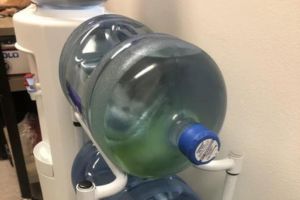
When water gets too old to drink, it means that it has been contaminated by bacteria, algae, or other pathogens.
Contaminated water can cause serious health risks, including gastrointestinal illness, skin irritation and rashes, ear infections, and even more serious diseases.
⇒ 10 Medical Supplies You Need To Stockpile Before It’s Too Late
It’s important to be aware of the signs that your water may have become contaminated so you can avoid these risks.
There are several signs that your water may have become contaminated or is simply too old to drink. These include:
- A strange smell – If there’s a strange odor coming from your water, it could be a sign that it has become contaminated with bacteria or other pathogens.
- Murky or cloudy appearance – If your water looks discolored or cloudy, this could also be a sign that it has been contaminated with bacteria or other pollutants.
- Developed a strange color – If your water has taken on an unusual hue (such as yellowish or greenish), then this could indicate contamination as well.
- Green algae growing in it – Algae growth in standing water indicates the overgrowth of microorganisms, which can lead to contamination of the water supply.
- Has floaties – Floaties in water are usually indicative of bacterial growth, which can lead to contamination if left unchecked for too long.
How To Store Water So It Lasts Longer
Having clean, safe drinking water on hand is essential in any emergency situation. When stored correctly, water can last indefinitely.
But how do you store water so it will last as long as possible?
Use An FDA Approved Food Grade Storage Container
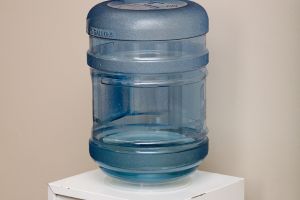 The first step in properly storing water is using an FDA-approved food-grade storage container. It’s important that the container be made of a material that won’t leach chemicals into the water. Make sure that whatever container you choose is clean and free of dirt or debris before filling it with safe drinking water.
The first step in properly storing water is using an FDA-approved food-grade storage container. It’s important that the container be made of a material that won’t leach chemicals into the water. Make sure that whatever container you choose is clean and free of dirt or debris before filling it with safe drinking water.
Clean And Sanitize Your Water Storage Container
Once your container is selected and clean, it’s time to sanitize it. This can be done by adding a teaspoon of liquid bleach to a quart of water.
You should then cover the container tightly and shake it thoroughly. Then, pour out the solution and let the sanitized container air dry.
Letting the sanitized container air dry before use will help keep any unwanted bacteria from getting into your stored water supply.
After air drying, make sure to secure a tight lid on your storage container so no contaminants can get in over time.
Use A Water Filter
Most filters are made of ceramic or activated carbon, which helps clear out dirt particles as well as bacteria and other contaminants.
If you have access to a water filter, make sure that you use it before storing the water in containers. You can also build your own water filter in under 30 minutes, using this guide and a few basic materials and tools
Remove Water Wisely
When removing safe water from your storage container, make sure that you use a clean device each time. Avoid touching the insides of the container with your hands, and never scoop safe water with your hands.
Avoid Storing Where Dangerous Substances Are Stored
Avoid storing your water where chemicals such as gasoline or pesticides are stored; these substances can contaminate the water even when sealed tightly in plastic containers.
If you can, keep the water out of your garage or shed if you’re storing other chemicals there.
Replace Every Six Months
Finally, replace stored drinking water every six months to ensure its quality and safety for consumption.
It’s important to know how long you can safely store your drinking water so that you don’t put yourself at risk of consuming contaminated liquid.
Generally speaking, you should replace any stored drinking water every six months, as bacteria and other contaminants may accumulate over time and make it unsafe for consumption.
Following these guidelines will help ensure that your family has access to clean drinking water whenever necessary.
You may also like:
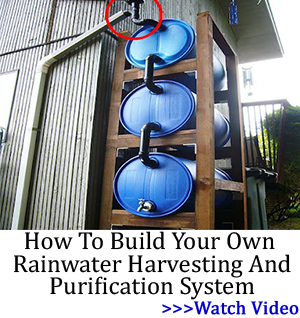 10 Most Powerful Medicinal Plants Used by Cherokees
10 Most Powerful Medicinal Plants Used by Cherokees
The DIY Device That Generates Free Drinking Water Day In And Day Out (Video)
Survival Hacks From The Civil War That Are More Useful Than Ever

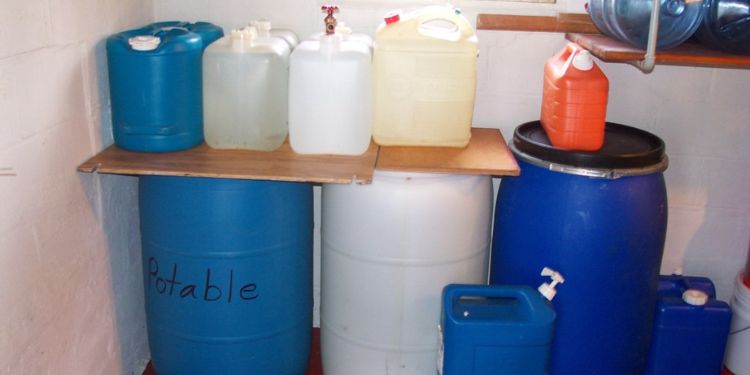




















I don’t appreciate the click bait. “Build your own filter using this guide” is a shameful plug for yet another book.
Just an aside…You really going to suggest, after the C19 fiasco…that we should trust anything the FDA has to say about anything?
NOT YOU FARMER? Might have clicked in the wrong spot?
If you just hover over the hyperlink with blue letters in the statement that reads “using this guide and a few basic materials and tools” it even shows that it IS clickbait, so Farmer is not wrong.
I was happy to se it.
OTOH, seems like boiling water and or some drops of bleach would do the job.
Bleach only lasts between 6 and 9 months in the bottle.
Seems to me treating/filtering water as you use it that has been stored for say years is better than collecting and treating/filtering pond water. Am I wrong?
That’s my thoughts, as well.
That’s my thoughts as well
it depends if it is a stagnant pond or has a supply inlet and outlet.
If the Later than pond water is best.
If stagnant then even after filtering it water stored properly for a decade or more is probably a better option.
I used to pump my water from whatever source (captured rain or hauled from municipal source thirty kms away) through a whole house canister type filter, treat with hydrogen peroxide, ( not now recommended by water boffins) and aerate/ recirculate depending on the charge status of my solar array. Final filtration of potable supply through a Brita tap mounted filter. No discernable ill effects in 10+ years of practice.
I have often heard that water doesn’t go bad if all of the precautions listed above are followed. I agree that it might be good to replace it every year or so, but I treat my stored water with 5 drops of uncented bleach and read somewhere that it should be good indefinately if sealed, stored in cool place away from sunlight. Yes, I will use a sawyers water filter to filter it before I use it just in case.
The water cycle of life has gone on since mankind has been around. If the earth’s worldwide would go bad. It’s because of poor stewardship of man. Not an environmentalist but a conservationist before the activist screwed up commonsense.
The toxic chemical spills occurring pollute our American water resources because of greedy corporations making a buck – USD. Like the recent spill in Ohio did.
Water does not really go bad, you can renew it from the storage can by pouring from one container to another, exposing stale water to oxygen.
The real problem is making sure to sanitize the water storage container first. To avoid virus, bacteria and mold taking hold and properly seal the container.
You can add certain food grade additives to maintain a fairly safe potable product.
To be safe always use a water filter of your choice or distillation process as a final step before consuming.
There are a few real water sanitation courses available to answer those questions. There are military manuals if you can still find them. There is a concerted effort to erase information from the internet, that was available for years.
Do your own research and discernment on this vital subject of prepping.
I hadn’t heard of a Sawyers filter before reading your comment, will check into those – thanks!
Howard, I too use bleach in my water storage. But I put 8 drops in each gallon of water that I comes from a municipal water supply. Same as you I store in a dark, cool place. In 2021 I opened a container, smelled good, looked good (not cloudy perfectly clear), tasted some, drank some . . . nothing wrong with it. Wife drank some as did a neighbor. Nobody got sick. I had set that aside in 2009, that was in storage for 12 years. Water stays good if treated right and stored right.
I read this because I have water stored in 2 liter botles. Probably over 300 bottles, for the last 12 years. I rinsed and cleaned each bottle in a bleach solution; then rinsed and dried. Then added 5 or 6 drops of chlorine bleach and filled each one. (I also used laundry bottles but they are clearly marked “wash only”) I dunno – none of my water is cloudy or discolored, and since I have Berkey filters I just plan on using that when we have to open the water. Anyone else think I am crazy?
If a LifeStraw (or other similar device) is used for a camping trip, then cleaned and put in storage for several months, does its effectiveness degrade? Is there a possibility that it may become contaminated, therefore rendering it useless? Are there any water test kits that anyone here has used and is confident in the results? I am of the belief that multiple storage and filtration practices are necessary, but one cannot always count on stored preps and must consider other options for the eventual emergency.
True, not all filters have the same characteristics on a level playing field. From the cheap version to the expensive have certain plus & minuses to their effect.
It is best to have more than one type of water filter as a backup. Even the best filter on the market can fail. Try to buy other than China. Now that we are in Cold War Status with them who knows the manufacturing quality control of those products.
The water filter requires maintenance and inspection. To be sure the water filtered through, after use did not degrade the filters function.
The old saying two is better than one, three is a charm.
Filters like the straw have plastic type filaments that work and can fail when not properly used. Especially in colder climates those filters if not dried well will rupture.
Water is an interesting subject, am still learning, not an expert, just know what works for me. So do your own research to be confident as in water, food, shelter and clothing knowledge.
Great question! I have Life Straws for all my kids but your questions are very good.
The MOST useless aspect of a filtering straw is that you can die of dehydration if you rely on it. Maybe it was the product I tried, but I sucked and sucked until my mouth hurt and COULD NOT GET ONE DROP OF WATER into my mouth.
So get one and try it, if you like, but before you rely on it. And be realistic as to whether it will really deliver the volume you actually need. Also bear in mind that, even if you find one that works, the only thing you can do with it is drink directly from the water. No cooking water, no water to wash with – even wounds, no tea, no poultice, nothing.
I really think that a portable hand-pump filter is much better in every way. If you want to travel light, ditch other things instead of whatever will deliver ENOUGH water for your needs. Our water was cut off for 2 days recently and you would not believe how much water you use all the time.
I have WMT water thats been stored in my cool dark basement for 2 years!
Still crystal clear, looks and tastes good!
What is WMT water?
if you use FDA approved food grade containers there’s no contaminants coming off that plastic >>> IF – there was ANY possibility – the FDA would have expiration dates and warning labels & DANGER DANGER DANGER !!!!! allllllllll over them ….
water is forever – if your water comes from an ancient aquifer 1,000 feet down – like mine does – it’s older than man himself …
you can keep up the yearly chem treat of your stored water or plan on treating the potable part of the stored water that gets pulled for a SHTF ….
what you need to watch for with stored water is the growth of any mold – the moisture and dark quarters storage is perfect for growth – check under those containers making floor contact – there’s usually a little “well” under there as part of the container design ….
Almost everyone misses this easy fix from the last 300 years. To keep bacteria away from your water, hang a cleaned, but old real siver dollar in your barrel. Silver has been used for hundreds of years by the elite to keep their water supplies potable. If you ever heard the saying, “born with a silver spoon in their mouth”, it is a reference to silver’s ability to kill bacteria and keep the “rich” healthy. Drill a hole in a silver dollar and suspend it 6-10 inches from the bottom, assuming your drawing point is near the bottom of the barrel. I have used standard 10 pound fishimg line with no problems. By the way if you scrape or injure yourself externally, honey has been used for centuries also, to prevent infection.
Per “The Lost Ways”, sailors discovered it took two silver dollars per gallon of water for long-term water purity in their storage casks. The number of silver dollars isn’t important, but surface area is.
Get “The Silver Card”, manufactured by Pyromet, and available from multiple bullion dealers. It’s a one-ounce silver bar in the same dimensions of a credit card. You can pound it even flatter on your anvil in order to increase the surface area, and then suspend that in your water barrel.
Seems fishy and expensive
My Grandfather taught me that 60 years ago, all my water container have a silver quarter hanging in them. He said that’s how they kept milk from spoiling
My experience is a bit different. I used to use two & three liter soda pop bottles after washing them out. Used them for water and dry stuff. I kept water for several years in the soda jugs, no problem. Aerate & filter the water, can even boil it. When the chips are down and you need water, the taste is meaningless. BTDT & still alive. As for the stuff that leaches out, yeah it’ll happen, but it’s not gonna kill you, either. As for the silver in the water, you can also use the one ounce bars. They are .999 fine, more fine that the old silver.
I do not see any mention about using a pure silver coin in stored water. That is something used on sailing ships to preserve drinking water. How does to apply in the prepping situation?
Water back then was a lot pure then the modern municipal city water supply. The modern city water is treated with chemicals like fluoride a toxic chemical.
True Sliver can do certain things to water but not take out city water with chemicals in it. That’s where distillation comes into the picture. We can’t always assume water filters are the cure-all to water treatment.
The ‘Lost Books’ should do a mini course on the water subject. There’s a lot of misinformation on the water subject that can get people sick.
There are a few water experts teaching the correct way to keep quality water ready for use.
No word on distilled water and storage.
Also, the Mfr of the commercial water dispenser containers says that the treated water inside lasts indefinitely so long as it is not exposed to sunlight.
@ crazy squirrel
Any clean water
contained in plastic. is dangerous after 6 months, MAX!
the plastic will leech into your prior distilled water…
(Sorry).
plastic- infused H20 rather dangerous to drink…
can still use it for house cleaning??
Distilled water does not contain minerals so can be dangerous when used for prolonged periods. Before drinking sprinkle some Himalayan crystal salt into it. It apparently contains 84 minerals in the correct form for easy absorption by the body. Do some research to find out the correct amount for each glass or litre of water. I keep a few kilos of this salt all the time. It may be worth storing to use as exchange instead of money.
Wow, I only drink rain water, collected and stored in 1200 gallon tanks since the SBA business loan program, always spend to learn, pump water from the lower to the higher tank and let it sit for six months protected from UV light. Bird shit and dead bugs are caught in the lower sediment collector pipes, after three years I cleaned out a small layer of blackish sediment from the first tank and refilled it.
Clear tanks, IDC, allow UV light to penetrate paint them to prevent algae growth, using 750 to water garden. Volcanoes ash is changing eht weather to cooler temps. Mass migration is coming, Michigan is experiencing snow in May?
AI has already killed everyone.
If you don’t have time to change out all your plastic gallon containers that have been filled with water for a couple years and not in sunlight, when that water is needed, can you trust putting it through something like a Berkey water filter to get out things that could make you really sick, like bacterias, molds, etc. All I’ve ever heard is to get Berkeys just for purposes like that. They are also the only ones touted to get the chlorine out of home pool water. If not, there are going to be a LOT of preppers who don’t make it because I don’t know anyone who is changing out their water regularly or even adding bleach to their water or silver. Many of us are depending on the Berkeys and LifeStraws. It’s hard enough with all the demands of one’s time today, to prep and prep and prep, to only find that now you have to redo it all. Maybe I’ll just be out of luck like a lot of preppers when the SHTF.
EXACTLY my question! I just posted something similar.
YOU can filter any water with a process
recycle any old water , even after you use and pee it out
Process is the issue , and contamination
need more article s on this process and the products you can use to build filters or cleaning devices and the necessity of regular maintainence on them
Water is the only thing you cannot live with out , 3-7 days until side effects to body
Food is around 30-60 days before shut down
Starvation does not set in untill around the 45 day mark
so even if you cannot eat , you must have clean water
most single water purifiers will work
Reverse Osmoses is best and most effective
Do the research while we still can
once in hardship mode , there will be no inet, purchasing , or resolve
real close to depression , so be ready , get ready , be prepared
One (1) Gallon of water per DAY…per PERSON?
I must truly be living in an alternate universe!!!! I could NOT
and most probably will not be able to function on
One (1) Gallon per day for
Drinking
Washing myself
Washing laundry
Washing fruits & Vegetables
Washing Rice
Cooking Pasta
Cooking Souls
Doing Dishes
Washing floors
One Gallon per Day???
THOU ART A BETTER MAN THAN – MOI !!!!!?
Cooking SOUPS!!!! (NOT SOULS… GOOD GRIEF!!!?)
You’re absolutely correct. One gallon per day is for an immediate emergency, where you suspend your usual water-based activities. We just experienced this.
If you don’t know how long it will be before you get water again, you will want what you have to last, and so will use as little as possible. That means only washing as necessary, suspending laundry, dishwashing, and so on.
And this doesn’t take into account the needs of animals and plants that you need to keep alive and healthy.
To live life sustainably takes much, much more than 1 gallon per day per person.
I would surmise that reverse osmosis water that’s put into a sanitized container would last much longer. I rotate R.O. Water every 18-24 months. I never dump it but drink it and have NEVER rue across contamination or suffered any I’ll effects from consuming it.
My grandmother grew up in Texas , poor and water came from a well . It had natural fluoride in it. She never had a cavity. Or broken bone in her life lived to 83 her mother 98. Both perfect teeth. No dental work . They picked cotton . I doubt the water was boiled.
I have heard – However Long you keep water.
If you boil it first – It Should be OK/good to use.
In a Water “Pinch” – You can drain your water heater and use that.
Suggest you Purify 1st by boiling etc.
Other collection methods:
Put Plastic Drums at bottom of Roof Down-Spouts.
But that water would def need to be Purified before use.
Probably Filter It – then Purify.
I keep a 50gal, food grade Drum of Water in the basement.
Add A few drops of Chlorine every yr.
I see no reason why stored water cannot be rejuvenated by filtering through a fine cotton cloth into a clean container for boiling to a rapid boil, then allowed to cool. The original storage containers should be sanitized with unscented bleach, returning the boiled water to only one container and pouring the water back and forth between two containers to aerate (this improves the taste). You will need a third clean container to continue the filling process, and so on as you fill the containers. Last have a Doulton (Berkey, if you like.) gravity-fed water filtering system in your home in a shaded part of your kitchen/dining, for the final-filtering before drinking and cooking. I only say Doulton because it’s what I’ve always used and trusted (I look for “Made in Britain” on the filters and would not go near filters made elsewhere, that will be cheaper to purchase.) It is my understanding, that they developed the system, and initially the British Foreign Ministry (then, eventually, the U.S. Dept. of State & their Foreign Service Officers) were sent to their posts around the “Empire” with a Doulton gravity filter system, and it kept them reasonably safe (mistakes do happen). I personally used Doulton for a number of years in the Third World, and still do not drink even tap water in Florida, nor would I anywhere, without it dripping through a gravity system. Lastly these were the steps I used while living in Burma, now Myanma, but still Burma to me. Well water pumped to rooftop tank for gravity feeding water through the home. All taps had a heavy-weight cotton sock tied to them for filtering solids and this liquid was never allowed into the mouth. Next, water was fed into a large, canning-sized pot; that may contain five gallons. Next, water was brought to a rapid boil, heat was reduced to a slow to moderate boil for 20 minutes. Then allowed to cool to room temperature. Water was then covered with a tight-fitting lid and sat next to the Doulton gravity system for keeping the upper tank full. As the water filled the lower tank it would be bottled in sanitized containers and placed in the refrigerator, first uncovered to allow the water to aerate for several hours and then lids would be fitted. Also, to show how you had to work at staying healthy and essentially be your own health department, all fresh produce from the market was brought into the home and first went directly to the kitchen where all was immersed into a sink (cold water, dish detergent, small amount of bleach) for washing and then rinsed well with the refrigerated water and allowed to drip dry/air dry before refrigerating. Don’t lie to yourself. Living even somewhat off grid will be a full-time job. It will be your occupation, or avocation if you prefer. Whatever you name it, it will be hard work that must be done to sustain your “gut-health.”
Water that is sterilized (boiled) and stored in sterilized glass properly sealed eg. cheese wax will be safe for 100’s of years. Never throw away glass🤗
The stuff that kills algae in ponds is also safe for humans🤗 cheap at Wal-Mart
If you have older water in a dark plastic container (outside water collector) that has correct bleach added to it, will boiling it clemse it emough to drink?
Water that is sterilized (boiled) and stored in sterilized glass properly sealed eg. cheese wax will be safe for 100’s of years. Never throw away glass🤗
Check out Pinterest for canning & storing water, If you have room to store empty quarts or pint jars, why not make that space for canned water! I have yet to try this but sounds lots easier!
I live in Florida and nobody is commenting on what is our largest source of emergency water, swimming pools. If power and pool filtration is lost for an extended period of time, how can that very large water source be kept safe to drink and wash with? I have a salt bromide pool that creates its own chlorine to keep the pool from forming algae. Our community probably has 30% of the homes with pools. I might have to shoot a few neighbors who want to use my pool to bathe? Should I stockpile other chemicals to add to keep it clean with no electricity?
You shouldn’t depend on water for your minerals. Their presence is too inconsistent. Minerals should come from your food. I’ve been drinking distilled water for about 30 years and have good bones and teeth with no micro plastics. For storage I use 5 gallon food grade bottles with one tablespoon of bleach in each and filled with tap water which has fewer micro plastics than bottled water. I change the water every 6 months.